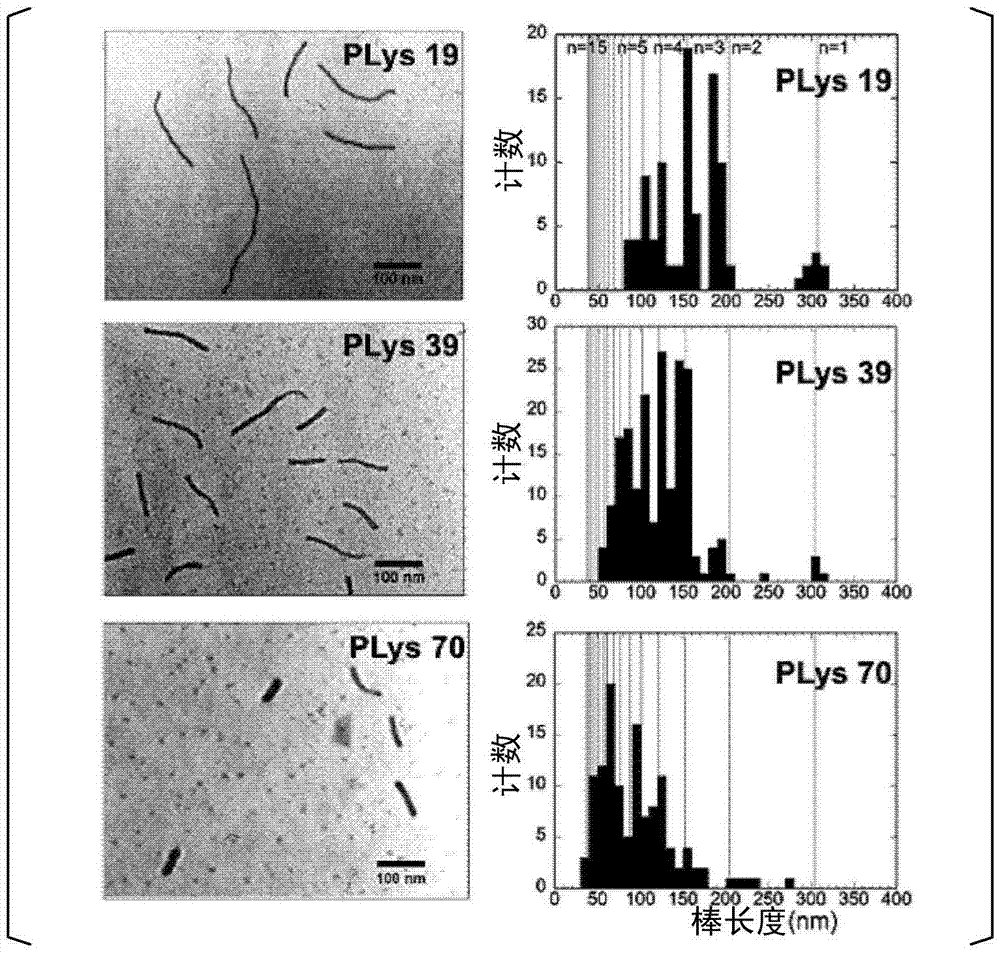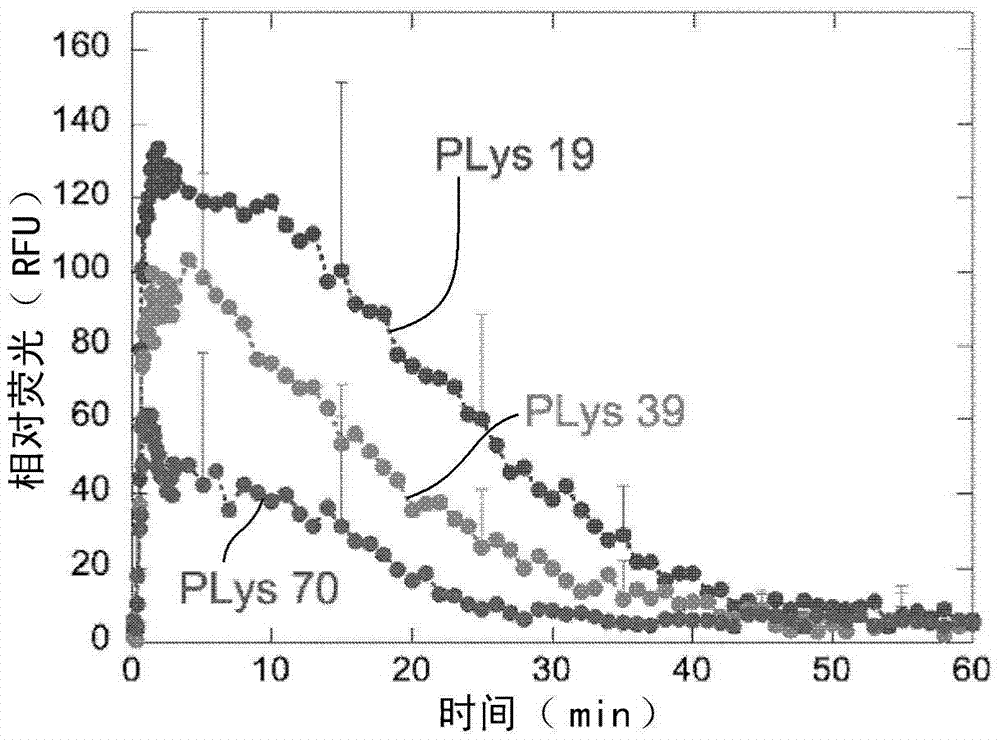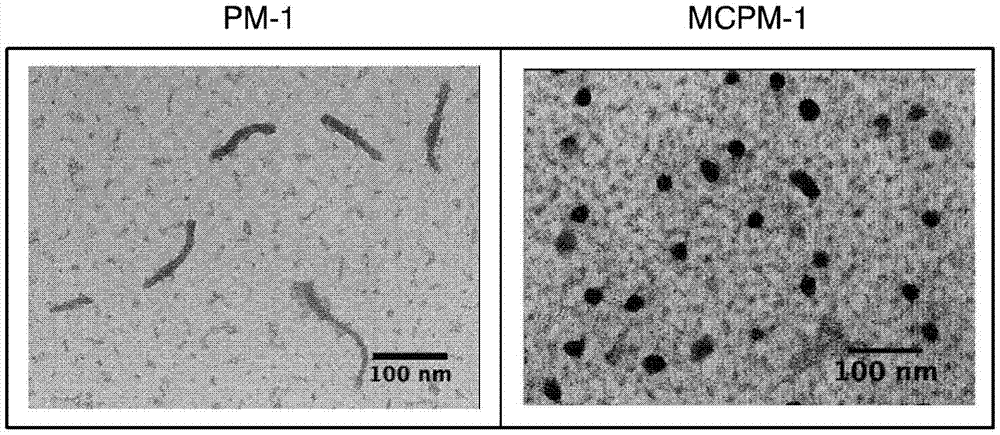Nucleic acid-encapsulating polymer micelle complex and method for producing same
A manufacturing method and polymer technology, which can be applied to the manufacture of gene therapy compositions, other methods of inserting foreign genetic materials, and the use of microcapsules, etc., can solve problems such as insufficient introduction efficiency, and achieve excellent intake efficiency and blood. Excellent retention effect
- Summary
- Abstract
- Description
- Claims
- Application Information
AI Technical Summary
Problems solved by technology
Method used
Image
Examples
Embodiment
[0111] Hereinafter, although an Example etc. demonstrate this invention in more detail, this invention is not limited to these examples. In addition, all the following animal experiments were performed in accordance with the guidelines related to the management and use of experimental animals of the University of Tokyo, a national university corporation.
reference example 1
[0113] Using a block copolymer consisting of a PEG block and a PLys block, investigation of the degree of polymerization of the PLys block and the polymer micelle complex in a polymer micelle complex containing double-stranded DNA (pDNA) with a double helix structure shape relationship.
[0114] (1) PEG-PLys
[0115] α-Methoxy-ω-amino PEG (PEG, Mw=12kDa, M w / M n =1.05) as an initiator, and make N ε -N-formic anhydride (NCA) of trifluoroacetyl-L-lysine was subjected to ring-opening polymerization to produce PEG block-poly(ε-trifluoroacetyl-L-lysine) block (PEG -PLys(TFA)). At this time, three kinds of PEG-PLys(TFA) having different degrees of polymerization were produced by adjusting the ratio of the initiator to the NCA monomer. The trifluoroacetyl group (TFA group) of the three kinds of PEG-PLys (TFA) thus obtained was deprotected with sodium hydroxide to obtain three kinds of PEG-PLys having different degrees of polymerization ("n1" in the following chemical formula). ...
Embodiment 1
[0145] Composite of nucleic acid-encapsulating polymer microcapsules produced by the conventional method of directly encapsulating pDNA and nucleic acid-encapsulating polymer microcapsules produced by combining the dissociated double helix structure of pDNA with a block copolymer body, the shape, size, and density of block copolymers were compared.
[0146] (1) PEG-PAsp(DET)-Chole
[0147] Use α-methoxy-ω-amino PEG (PEG, Mw=12kDa, M w / M n =1.05) as an initiator, and the NCA of β-benzyl-L-aspartic acid ester (BLA) was subjected to ring-opening polymerization, thereby producing PEG block-poly(β-benzyl-L-aspartic acid Ester) block (PEG-PBLA). At this time, three kinds of PEG-PBLAs having different degrees of polymerization were produced by adjusting the ratio of the initiator to the NCA monomer.
[0148] In the presence of 10 times equivalents of dicyclohexylcarbodiimide and 2 times equivalents of 4-dimethylaminopyridine, the amino group at the end of the obtained PEG-PBLA a...
PUM
 Login to View More
Login to View More Abstract
Description
Claims
Application Information
 Login to View More
Login to View More - R&D
- Intellectual Property
- Life Sciences
- Materials
- Tech Scout
- Unparalleled Data Quality
- Higher Quality Content
- 60% Fewer Hallucinations
Browse by: Latest US Patents, China's latest patents, Technical Efficacy Thesaurus, Application Domain, Technology Topic, Popular Technical Reports.
© 2025 PatSnap. All rights reserved.Legal|Privacy policy|Modern Slavery Act Transparency Statement|Sitemap|About US| Contact US: help@patsnap.com



